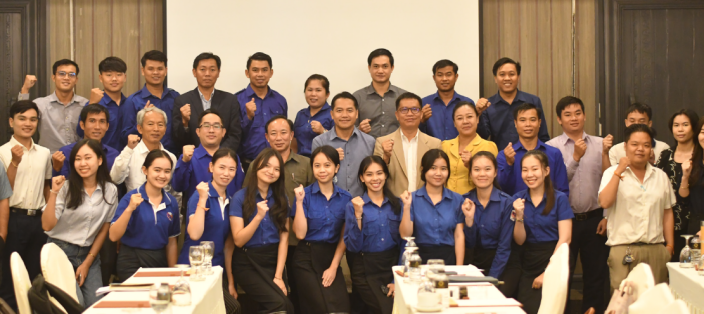Study on Social Media Use Among High School and University Students in Vientiane, Lao PDR
Background
Access to mobile phone broadband in Laos sharply increased from 2000 to 2015. However, in 2017, the percentage of
Internet access was only 21.9%, which was the lowest in Southeast Asia, lower than Cambodia (25.6%) and Indonesia
(25.4%). According to the Digital-Government Center, MTC, in 2021, the percentage of Internet access stood at 48.4%,
and the percentage of active social media users was 49.1%, indicating a rapid increase during the intervening years.
Social media is becoming a vital platform for daily activities in Laos, including education, politics, social networking,
and trading. Moreover, social media has become essential and changed work modality since the COVID-19 pandemic.
Despite the many positive impacts of social media on youth development, many studies have illustrated some negative
factors, such as reduced physical activity and depression. This study aims to summarise and map out the existing laws,
policies, regulations, ministerial decrees, and instructions, both official and grey documents from relevant ministries,
departments and centres; understand and describe gaps in how the laws, policies, regulations, ministerial decrees,
and instructions, are enforced; describe social media use among high school, college, and university students; and
provide recommendations to maximise the positive impacts of social media on development in key/study populations.
Findings
All reviewed laws and decrees highlighted issues related to human resource capacity building, free speech and
expression, data privacy and security, and gender equality and disadvantaged populations. Key informants expressed
that disseminating existing laws and regulations related to digital communication technology and cyber and computer
crime was insufficient, and only law and digital policy implementers and telecommunication providers were aware
of the existing laws and regulations. Some key informants were unaware of the laws; thus, they could not provide
detailed comments.
In total, we interviewed 650 students. Almost all (99.3%) owned a smartphone and had access to the Internet. On
average, students spent 20 to 30 minutes on their phone during class hours. Both high school and university/college
students spent 120 minutes on smartphones and social media after school hours. Facebook was the most popular
platform among high school and university/college students (29.0% and 29.9%, respectively). Using social media
for entertainment (music and movies) was another reason for using social media among high school and university/
college students (28.6% and 27.5%, respectively). Of the students interviewed, 11.7% and 25.2% of high school and
university/college students, respectively, had shared fake news, in which 39.8% searched for further information
beforehand and 34.5% used their personal opinion to verify whether it was fake news. The difference between the
two groups was statistically significant (OR=0.4, p<0.001). When asked about account security, 26.2% of students
interviewed reported that their social media account was hacked, while 15.8% and 20.7% of high school and
university/college students, respectively, reported that unknown persons had used their digital footprint.Of the students interviewed, 30.6% of students experienced bullying through social media. In terms of financial scams, 21.5% of high school students and 30.0% of university/college students experienced being tricked into transferring money. When facing social media problems, 55.2% consulted with friends and 17.1% consulted with parents; less than 2% consulted with their teachers.
